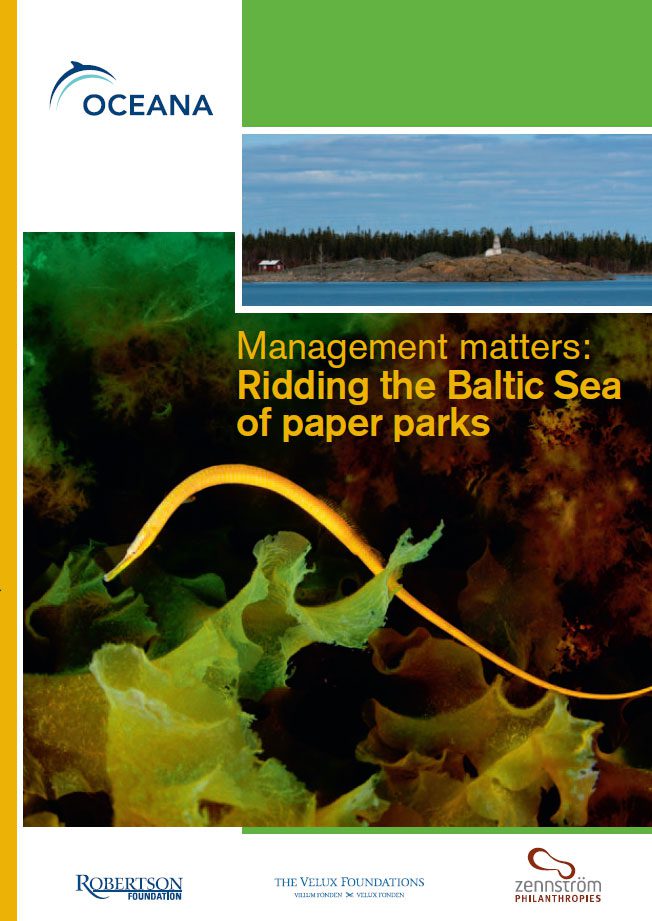Report | February 26, 2015
Management matters: Ridding the Baltic Sea of paper parks
Threats to the marine environment are multiple and growing and the Baltic Sea is no stranger to them. Numerous human activities have put its ecosystems under severe pressure and it has become one of the most polluted seas in the world. In order to safeguard species and habitats, and to recover the healthy status of the sea, one of the most widely recognized and effective tools to address the activities affecting marine and coastal ecosystems is needed: a network of well-managed marine protected areas (MPAs). Such a network, if it is well designed, can help curb the loss of marine resources and recover entire ecosystems by providing protection and decreasing the loss of endangered marine species and habitats, and restoring depleted fish stocks.
Today about 12% of the Baltic Sea is covered by MPAs, but despite this relatively high figure, the management of these sites remains poor and uneven.
This report provides an overview of MPAs and the quality of their management in the Baltic Sea and Kattegat, covering the EU’s Natura 2000 sites, HELCOM Baltic Sea Protected Areas (BSPAs), and MPAs under national law. The status of MPA management plans, including possible fisheries measures, was reviewed to the extent that information was available. Data was collected using EU (Standard Data Forms, SDF) and HELCOM BSPA databases. Because some of these are not consistently updated and contain some outdated data that fails to reflect the most accurate situation, we also approached national authorities directly. Information was obtained from all countries except the Russian Federation. The European Environment Agency and European Commission Directorate-General for the Environment (DG ENVI) were consulted as well.
Overall we have found out that more than half of the MPAs in the Baltic Sea and Kattegat have management plans, but they often fail to offer any concrete measures or solutions, remaining protected only on paper. To protect against threats to the marine environment and reverse the decreasing biodiversity trend, proper management measures are needed. The first crucial step is to identify the threats facing MPAs in the region so as to be able to target the plans effectively. Next, management plans addressing all human activities and threats, including strict measures, should be developed for all existing MPAs. In addressing fishing activities, these plans should include restrictions where needed, as well as better monitoring, control and surveillance of these activities, including recreational fisheries. The precautionary approach should be applied in all cases where a lack of information occurs.



